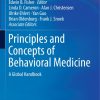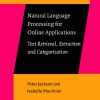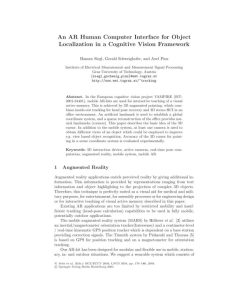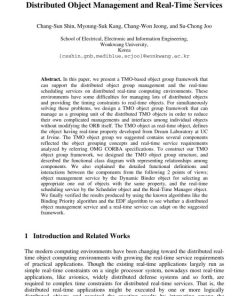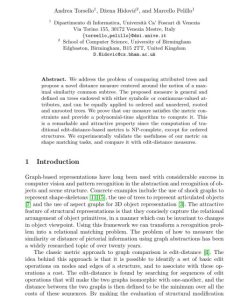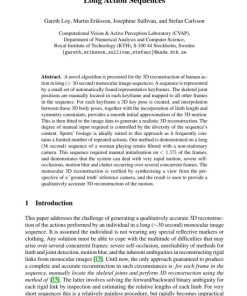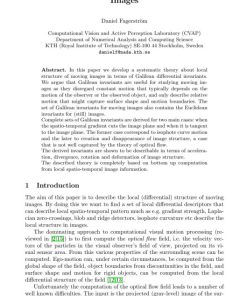A Bayesian Framework for Multi cue 3D Object Tracking 1st edition by Giebel, Gavrila, Schnorr ISBN 3540219811 9783540219811
$50.00 Original price was: $50.00.$25.00Current price is: $25.00.
Authors:J. Giebel, D.M. Gavrila; C. Schn̦rr , Tags:Computer Vision РECCV 2004 , Author sort:J. Giebel, D.M. Gavrila & Schn̦rr, C. , Languages:Languages:eng , Published:Published:Mar 2004
A Bayesian Framework for Multi-cue 3D Object Tracking 1st edition by J. Giebel, D. M. Gavrila, C. Schnörr – Ebook PDF Instant Download/Delivery. 3540219811, 978-3540219811
Full download A Bayesian Framework for Multi-cue 3D Object Tracking 1st Edition after payment
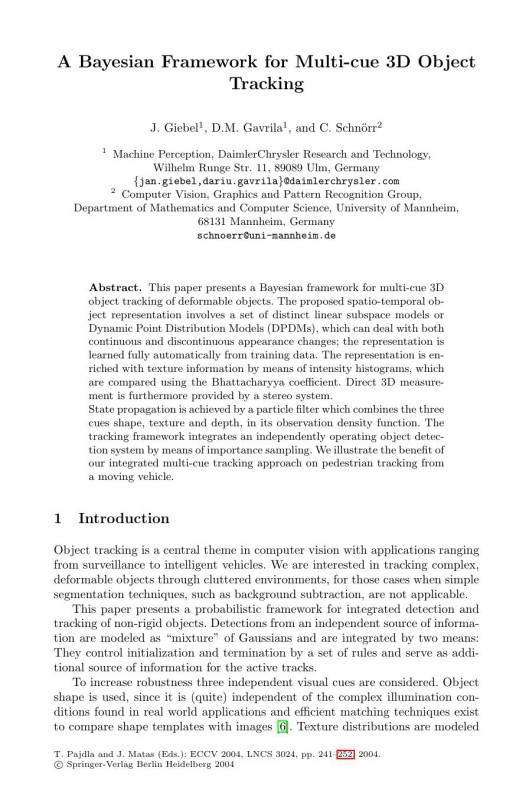
Product details:
ISBN 10: 3540219811
ISBN 13: 978-3540219811
Author: J. Giebel, D. M. Gavrila, C. Schnörr
This paper presents a Bayesian framework for multi-cue 3D object tracking of deformable objects. The proposed spatio-temporal object representation involves a set of distinct linear subspace models or Dynamic Point Distribution Models (DPDMs), which can deal with both continuous and discontinuous appearance changes; the representation is learned fully automatically from training data. The representation is enriched with texture information by means of intensity histograms, which are compared using the Bhattacharyya coefficient. Direct 3D measurement is furthermore provided by a stereo system.
State propagation is achieved by a particle filter which combines the three cues shape, texture and depth, in its observation density function. The tracking framework integrates an independently operating object detection system by means of importance sampling. We illustrate the benefit of our integrated multi-cue tracking approach on pedestrian tracking from a moving vehicle.
A Bayesian Framework for Multi-cue 3D Object Tracking 1st Table of contents:
-
Introduction
- 1.1 Motivation for Multi-cue 3D Object Tracking
- 1.2 Challenges in 3D Object Tracking
- 1.3 The Role of Bayesian Frameworks in Tracking
- 1.4 Contributions of the Paper
- 1.5 Structure of the Paper
-
Related Work
- 2.1 Overview of 3D Object Tracking Methods
- 2.2 Single-Cue vs Multi-Cue Tracking Approaches
- 2.3 Bayesian Methods in Object Tracking
- 2.4 Multi-Cue Fusion Techniques
- 2.5 Limitations of Existing Multi-Cue Tracking Systems
-
Problem Definition
- 3.1 Formulation of the 3D Object Tracking Problem
- 3.2 Defining the Tracking Cues (e.g., appearance, depth, motion)
- 3.3 The Bayesian Framework for State Estimation
- 3.4 Assumptions and Constraints in Multi-cue 3D Tracking
-
Bayesian Framework for Multi-cue Tracking
- 4.1 Introduction to Bayesian Inference
- 4.2 Dynamic State Modeling Using Bayesian Networks
- 4.3 Multi-cue Data Fusion in Bayesian Tracking
- 4.4 Sensor Models and Likelihood Functions for 3D Object Tracking
- 4.5 Temporal Dynamics and State Evolution in Tracking
- 4.6 Recursive Estimation: Kalman and Particle Filters
-
Cues for 3D Object Tracking
- 5.1 Visual Cues: Color, Texture, and Edge Information
- 5.2 Depth Cues: Stereo Vision, LiDAR, and Depth Sensors
- 5.3 Motion Cues: Optical Flow, Velocity, and Trajectory Analysis
- 5.4 Geometric Cues: Shape, Surface Normals, and 3D Point Clouds
- 5.5 Combining Cues: Challenges and Methodologies for Fusion
- 5.6 Multi-Cue Robustness and Adaptation in Dynamic Environments
-
Tracking Algorithm Design
- 6.1 Tracking Architecture Overview
- 6.2 Initialization of 3D Object Model and Cues
- 6.3 Likelihood Estimation for Each Cue
- 6.4 Bayesian Integration of Multi-Cue Data
- 6.5 Recursive Tracking Using Kalman or Particle Filtering
- 6.6 Dynamic Updates and Model Refinement
- 6.7 Handling Uncertainty and Occlusion in Tracking
-
Experimental Setup and Evaluation
- 7.1 Datasets for 3D Object Tracking
- 7.2 Performance Metrics for Multi-cue Tracking (e.g., accuracy, robustness)
- 7.3 Experimental Setup: Hardware and Software Platforms
- 7.4 Comparison with Single-Cue and Other Multi-Cue Tracking Methods
- 7.5 Impact of Cue Selection and Fusion on Tracking Accuracy
- 7.6 Benchmarking Results on Real and Synthetic Data
-
Results and Discussion
- 8.1 Quantitative Results of Multi-cue Tracking Performance
- 8.2 Visual Comparisons of Tracking with Multi-cue vs Single-cue Systems
- 8.3 Sensitivity to Environmental Factors (e.g., lighting, motion)
- 8.4 Robustness to Occlusions, Noise, and Sensor Errors
- 8.5 Performance in Dynamic and Complex Scenarios
- 8.6 Limitations of the Current Approach
-
Applications of Multi-cue 3D Object Tracking
- 9.1 Robotics and Autonomous Navigation
- 9.2 Augmented Reality and Virtual Reality
- 9.3 Surveillance and Security Systems
- 9.4 Human-Computer Interaction and Gesture Recognition
- 9.5 Medical Imaging and Diagnosis
-
Challenges and Future Directions
- 10.1 Real-time Performance and Scalability of Multi-cue Tracking
- 10.2 Handling Dynamic Environments and Moving Objects
- 10.3 Improving Cue Fusion Strategies for Robustness
- 10.4 Incorporating Deep Learning for Improved Feature Extraction
- 10.5 Extending to Multi-Object and Multi-View Tracking
- 10.6 Future Research Directions in Bayesian Multi-cue Tracking
- Conclusion
- 11.1 Summary of Key Contributions
- 11.2 Effectiveness of the Bayesian Framework for Multi-cue 3D Tracking
- 11.3 Final Remarks and Future Outlook
People also search for A Bayesian Framework for Multi-cue 3D Object Tracking 1st:
what is a bayesian framework
a bayesian framework for information theoretic probing
a practical bayesian framework for backpropagation networks
a framework for bayesian optimization in embedded subspaces
what is bayesian analysis and its purpose

